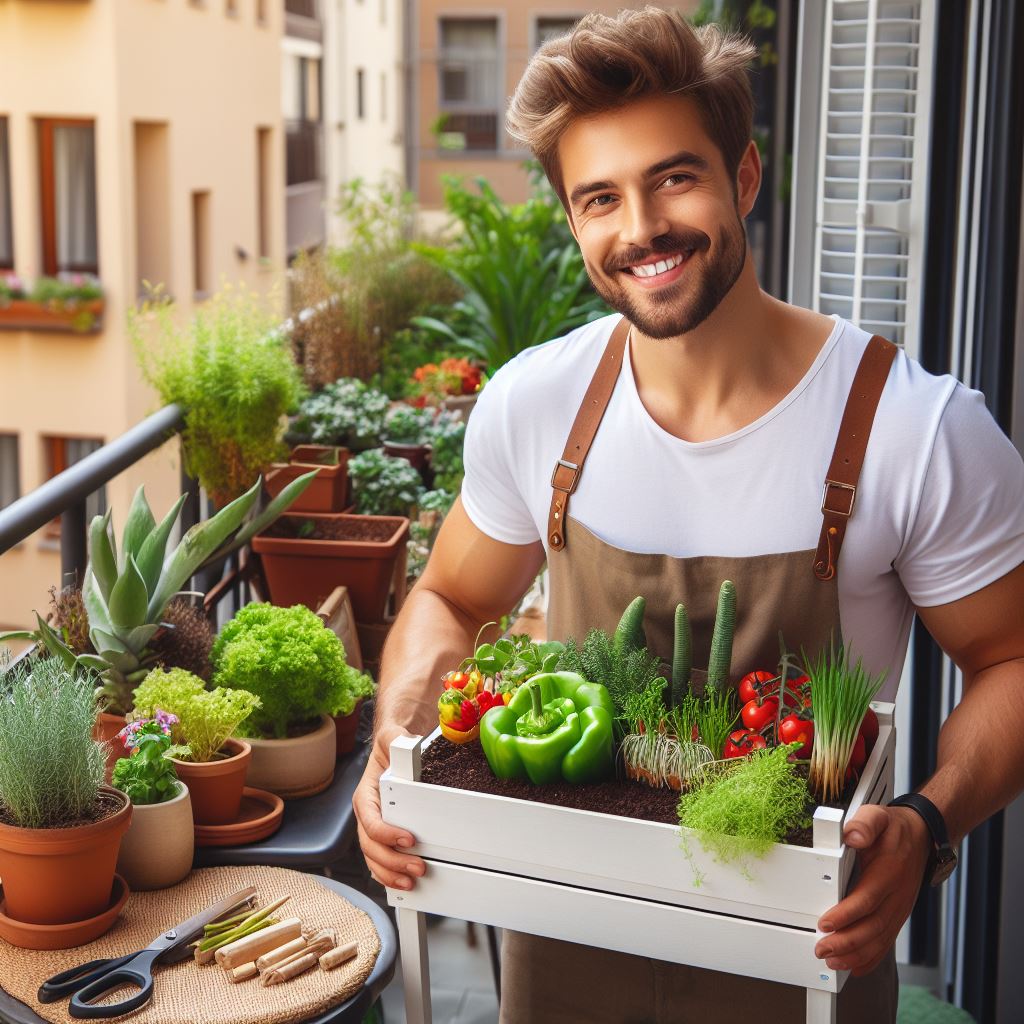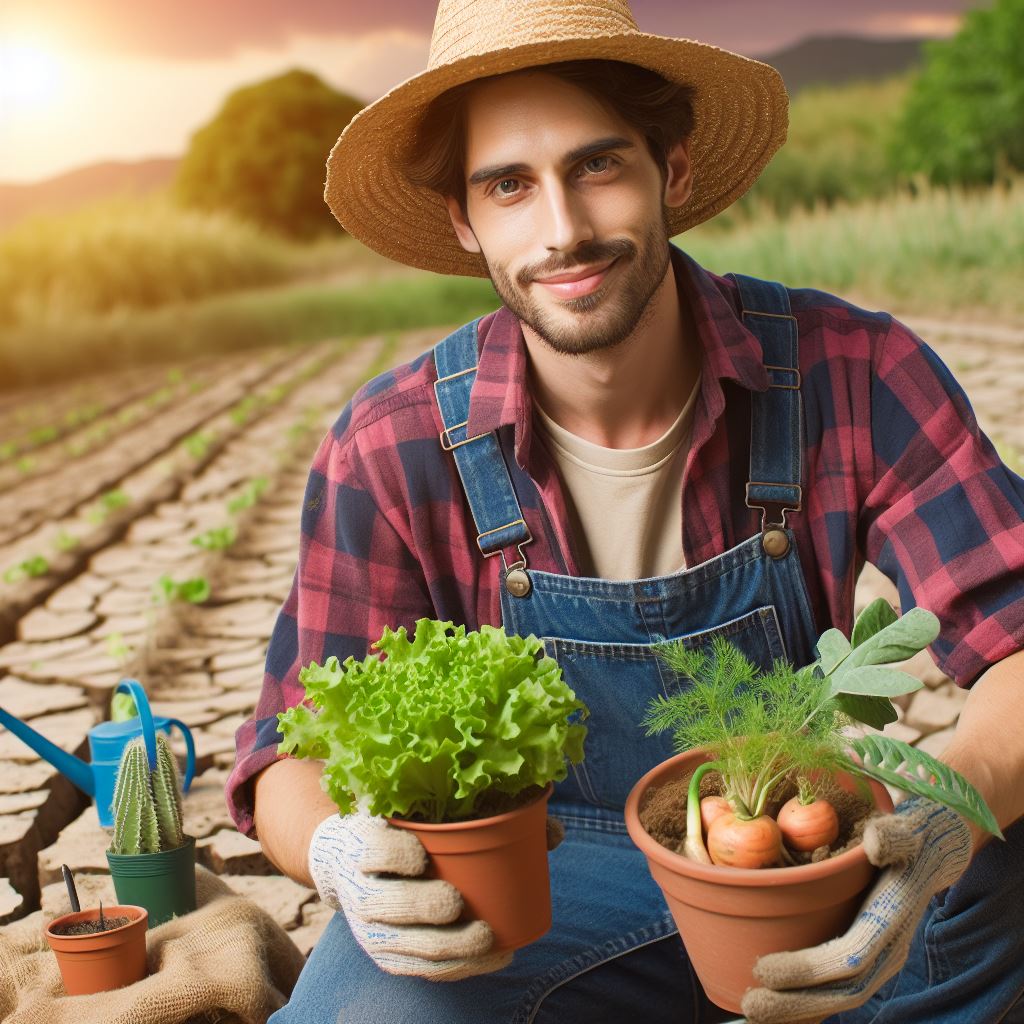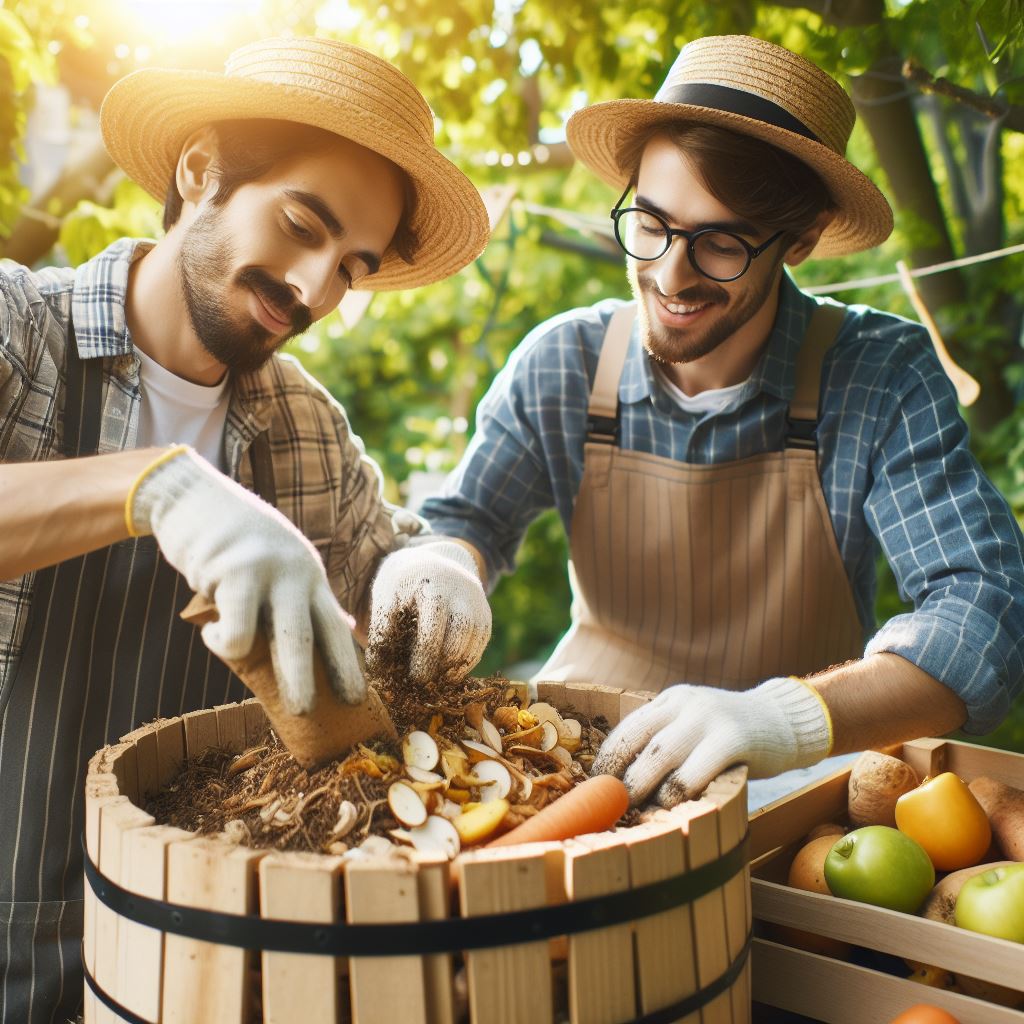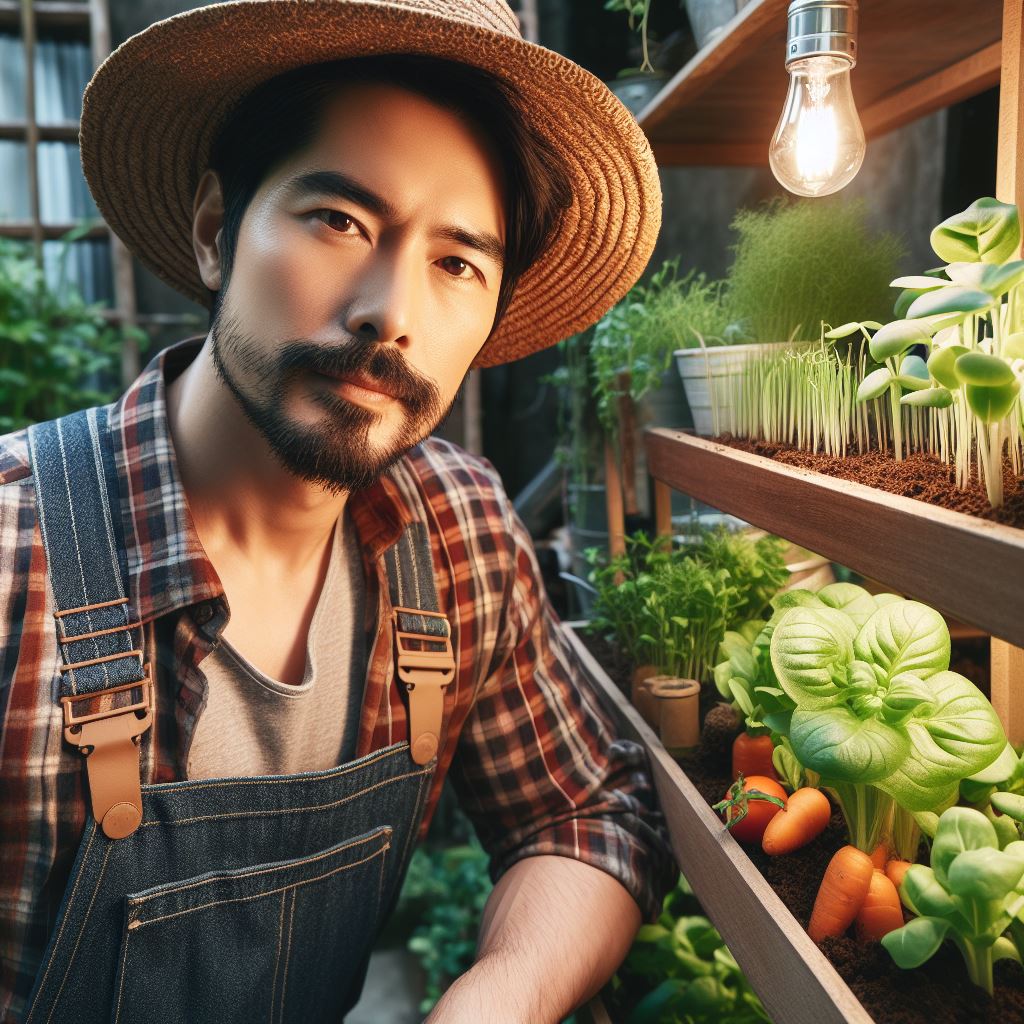Introduction
Seed starting, a fundamental aspect of gardening, involves germinating seeds indoors before transplanting them into the garden.
This initial stage sets the foundation for robust plant growth throughout the season.
Importance of planning and following proper timelines
The importance of planning and adhering to proper timelines cannot be overstated in seed starting.
It’s akin to laying a solid groundwork for a building – without it, the structure may falter.
By planning ahead and following timelines diligently, gardeners maximize the chances of success and minimize setbacks.
Overview of the tips and guidelines to be discussed in the blog post
In this blog section, we’ll delve into a comprehensive overview of tips and guidelines for effective seed starting.
From selecting the right seeds to providing optimal growing conditions, each step plays a crucial role in nurturing seeds into healthy seedlings ready for transplantation.
Throughout the section, we’ll explore various techniques and best practices to help both novice and experienced gardeners achieve success in their seed starting endeavors.
Understanding Seed Starting Timelines
Explanation of the different seed starting timelines based on plant types (annuals, perennials, vegetables, etc.)
Each plant type has specific requirements for seed starting.
Annuals can be started earlier than perennials or vegetables.
- Annuals: These plants have a shorter life cycle and can be directly sown in the garden or started indoors a few weeks before the last frost date.
- Perennials: These plants have a longer life cycle and should be started indoors earlier to give them enough time to develop before transplanting.
- Vegetables: The seed starting timeline for vegetables varies depending on the specific vegetable. Some require an early start indoors, while others can be direct-sown in the garden.
Factors to consider when determining the appropriate seed starting date
Factors to consider when determining the appropriate seed starting date (last frost date, plant growing time, etc.)
The last frost date is crucial in determining when to start seeds.
It’s important to know the average date of the last frost in your area.
Plant growing time is another factor to consider. Some plants require a longer growing period before they can be transplanted outdoors.
Other factors include the desired maturity date, weather conditions, and the specific requirements of the plant species.
Importance of checking seed packet instructions for specific timing recommendations
Seed packet instructions provide valuable information on when to start seeds for optimal growth and development.
These instructions take into account the specific needs of the plant, such as ideal temperature, light requirements, and germination time.
Following the recommended timing ensures that seeds have the best chance of germinating and growing into healthy plants.
Benefits of starting seeds indoors versus direct sowing in the garden
Starting seeds indoors allows for better control of the growing environment, including temperature, moisture, and light.
Indoor seed starting provides a head start on the growing season, giving plants more time to mature and produce a bountiful harvest.
It also protects young seedlings from adverse weather conditions and pests that could damage or kill them.
Transform Your Agribusiness
Unlock your farm's potential with expert advice tailored to your needs. Get actionable steps that drive real results.
Get StartedDirect sowing in the garden is suitable for certain plants that don’t transplant well, like root vegetables and large-seeded crops.
It can simplify the planting process and eliminate the need for transplanting, reducing the risk of transplant shock.
Read: Pest Control: Organic Solutions for Gardens
Tips for Successful Seed Starting
Choosing the right containers and soil mix for starting seeds
- Select containers that allow for proper drainage to prevent waterlogging.
- Use sterile seed starting mix to minimize the risk of diseases and pests.
- Consider biodegradable pots, such as peat pots, to avoid disturbing delicate roots during transplanting.
Providing proper lighting and temperature conditions for seed germination
- Place seed trays in a warm location with consistent temperatures for optimal germination.
- Use a grow light or place seeds near a sunny window to provide adequate light.
- Maintain a temperature of around 70-75°F during the germination period.
Techniques for seed sowing and spacing
- Follow seed packet instructions for proper sowing depth and spacing between seeds.
- Create furrows or divots in the soil mix using a small tool or your finger.
- Gently press the seeds into the furrows and cover them lightly with soil.
Watering and fertilization guidelines for young seedlings
- Water newly planted seeds gently to avoid displacing them.
- Use a misting bottle or a bottom-watering tray to keep the soil evenly moist.
- Once seedlings emerge, water from below to encourage deep root growth.
- Begin fertilizing seedlings with a diluted balanced liquid fertilizer once they develop true leaves.
Importance of monitoring and adjusting growing conditions as needed
- Regularly check the moisture level of the soil and adjust watering accordingly.
- Monitor temperature fluctuations and provide additional heating or cooling as necessary.
- Watch for signs of nutrient deficiencies or diseases and respond promptly.
Common mistakes to avoid when starting seeds
- Overwatering, leading to root rot or mold growth.
- Using garden soil, which may contain pathogens or be too heavy for seedlings.
- Neglecting to thin out overcrowded seedlings, which can lead to stunted growth.
- Failing to provide adequate lighting, resulting in weak, leggy seedlings.
- Ignoring or forgetting to label seed trays, causing confusion during transplanting.
By following these tips, you can increase your chances of successful seed starting and enjoy healthy, thriving plants in your garden.
Happy growing!
Read: Using Essential Oils Against Pests

Maintaining and Transplanting Seedlings
Pruning and thinning seedlings for better growth
Seedlings need proper pruning and thinning to encourage healthy growth and prevent overcrowding.
Remove any weak or diseased seedlings to give the remaining ones more space and resources.
Gradual acclimatization of indoor seedlings to outdoor conditions
Before transplanting seedlings outdoors, it is essential to gradually expose them to outdoor conditions.
Start by placing them in a sheltered area for a few hours each day, gradually increasing their exposure.
Transplanting seedlings into larger containers or the garden
When seedlings have reached a suitable size, usually with a few sets of true leaves, they are ready for transplanting.
Gently remove them from their trays and replant them in larger containers or directly in the garden.
Proper care and protection of seedlings during the transplantation process
During the transplantation process, it is crucial to handle seedlings with care.
Hold them by the leaves or root ball to avoid damaging the delicate stems.
Water the seedlings before and after transplanting to minimize shock.
Tips for minimizing transplant shock and ensuring successful establishment
To minimize transplant shock and ensure successful establishment, follow these tips:
- Water seedlings thoroughly a day before transplanting to keep the roots hydrated.
- Choose an overcast day or transplant in the evening to reduce stress from excessive heat and sun.
- Dig a hole in the transplanting area slightly larger than the root ball to accommodate the seedling without crowding the roots.
- Handle seedlings gently and avoid touching the stem to prevent damage to the fragile tissues.
- Place seedlings at the same soil depth as they were in their previous containers to maintain stability and prevent stem rot.
- Firmly press the soil around the seedling to eliminate air pockets and provide stability.
- Water the transplanted seedlings immediately after planting to help settle the soil and ensure good root-to-soil contact.
- Mulch the soil around the seedlings to retain moisture, suppress weeds, and regulate soil temperature.
- Protect the transplanted seedlings from harsh weather conditions, such as strong winds or heavy rain, until they are well-established.
- Provide adequate support, such as stakes or cages, for tall or vining seedlings to prevent them from bending or breaking.
Remember to monitor the transplanted seedlings closely and provide regular care, including proper watering, fertilization, and pest control.
With proper maintenance and diligent attention, your seedlings will thrive and grow into healthy, productive plants.
Read: Maximize Small Spaces: Vertical Gardening
Troubleshooting Common Seed Starting Issues
Identifying and addressing issues related to poor germination
- Poor germination can occur due to old or low-quality seeds.
- Ensure seeds are stored properly in cool, dry conditions to maintain viability.
- Check the seed packet for specific requirements such as light exposure or soil temperature.
- Pre-soaking seeds, scarification, or stratification can improve germination rates.
- Overwatering or underwatering can also affect germination, so monitor moisture levels carefully.
- Adjust watering schedule or use a seedling heat mat to provide optimal conditions for germination.
- If germination still fails, consider purchasing new seeds from a reputable source.
Preventing and treating damping off disease in seedlings
- Damping off is a fungal disease that affects the base of seedlings, causing them to wilt and collapse.
- Ensure proper air circulation and avoid overcrowding seedlings to prevent the spread of disease.
- Use sterile potting soil and clean containers to minimize fungal spores.
- Water seedlings from the bottom to avoid splashing water on the stems.
- Apply a fungicide or use natural remedies such as cinnamon or chamomile tea to combat damping off.
- If damping off occurs, remove affected seedlings immediately to prevent further spread.
Dealing with leggy or weak seedlings
- Leggy seedlings are tall, thin, and weak due to insufficient light.
- Place seedlings in a location with bright, indirect light or provide supplemental grow lights.
- Maintain a proper distance between the light source and the seedlings to prevent burning.
- Rotate seedlings regularly to promote even growth.
- Strengthen weak seedlings by gently brushing your hand across their tops to simulate wind.
Solutions for overcrowding and lack of space
- Start with fewer seeds or use larger containers to avoid overcrowding.
- Thin out seedlings by gently removing the weakest ones, allowing the stronger ones to thrive.
- Transplant seedlings into larger pots or separate individual plants to provide more space.
- Utilize vertical space by using trellises or stakes for climbing plants.
- Consider utilizing alternative growing methods such as vertical gardening or hydroponics.
Recognizing and managing pest and disease problems
- Monitor plants regularly for signs of pests or diseases such as yellowing leaves or unusual spots.
- Use organic pest control methods like insecticidal soaps, neem oil, or companion planting.
- Remove affected plants or parts of plants to prevent the spread of disease.
- Practice good sanitation by cleaning gardening tools and removing plant debris.
- Consult a local gardening expert or extension service for specific pest and disease management advice.
In fact, successful seed starting involves troubleshooting common issues such as poor germination, damping off, leggy seedlings, overcrowding, and pest or disease problems.
With proper identification and proactive solutions, these challenges can be overcome, ensuring healthy and robust seedlings for transplanting.
Read: Urban Farming: Getting Started in Cities
Uncover the Details: Plant Diseases: Identification & Control
Conclusion
Recap of the Importance of Proper Seed Starting Timelines and Tips
In this section, we’ve delved into the critical aspect of seed starting timelines and tips.
We’ve emphasized the significance of understanding the specific requirements of each plant species to ensure successful germination and growth.
Encouragement Plan Ahead and Start Their Seeds on Time
As gardening enthusiasts, it’s essential to plan ahead and adhere to recommended seed starting timelines.
By doing so, you increase the likelihood of robust seedlings and a bountiful harvest in the future.
Whether you’re a novice or seasoned gardener, proper planning sets the stage for success.
Invitation to Share Their Own Seed Starting Successes or Ask Questions in the Comments Section
We invite you, our readers, to share your experiences with seed starting.
Whether you’ve encountered challenges or achieved remarkable success, your insights can benefit the community.
Additionally, if you have any questions or seek further clarification on seed starting techniques, please feel free to ask in the comments section below.
Your engagement enriches our gardening journey and fosters a supportive environment for learning and growth.
In short, mastering seed starting timelines and techniques is fundamental to a thriving garden.
By following the guidelines outlined in this section, you equip yourself with the knowledge and skills necessary to nurture healthy seedlings from the outset.
Remember to plan ahead, adhere to recommended timelines, and embrace the joys and challenges of seed starting.
Your dedication and efforts will be rewarded with a flourishing garden teeming with vibrant plants and abundant harvests.
Thank you for joining us on this journey, and we look forward to sharing more gardening insights and experiences with you in the future.
Happy gardening!




